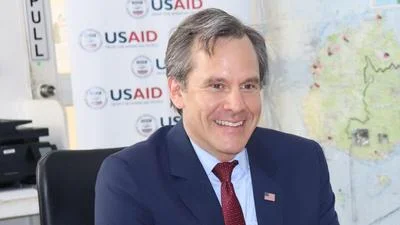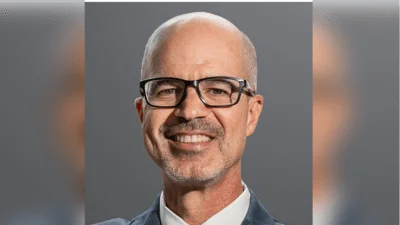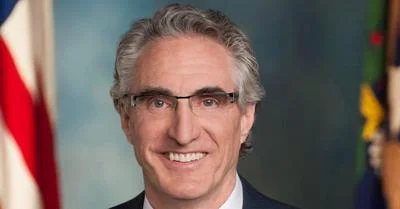The Congressional Record is a unique source of public documentation. It started in 1873, documenting nearly all the major and minor policies being discussed and debated.
“THE ADMINISTRATION'S FARM SAFETY NET PROPOSAL” mentioning the Federal Reserve System was published in the Senate section on pages S312-S314 on Feb. 3, 2000.
The publication is reproduced in full below:
THE ADMINISTRATION'S FARM SAFETY NET PROPOSAL
Mr. HARKIN. Mr. President, I want to talk on the issue of agriculture and rural America, and the administration's proposal announced by Secretary Glickman yesterday for improving the farm safety net.
At the outset, I am pleased that the administration has recognized that the Freedom to Farm bill has failed. The proposal the administration came up with is an impetus for change, and I think it will do a good deal to remedy the shortcomings of the Freedom to Farm bill.
I think the administration proposals of yesterday are a good step forward. I will go through a number of those. However, I want to forewarn my colleagues, while I think there is a lot in the administration's proposal that is good and positive and moves us ahead, I believe there are some shortcomings in it also.
First, on the conservation end, I believe the administration's proposal is a good step forward. It has some very positive features. The administration is proposing, for example, that we extend the conservation reserve program by 3.6 million acres up to 40 million acres. I believe that is a good proposal. That will do a lot to help conserve land and water and take some land out of production. It will help our wildlife. I think this is a good step.
There is a proposal for $600 million for the conservation security program. This is a program that is designed after a bill I authored to set up a conservation security program whereby farmers and ranchers could, on a voluntary basis, carry out certain conservation measures on their land, and then they would receive payments for doing so. This program would be administered by the Natural Resources Conservation Service. Again, this is fully voluntary, but it is another means whereby farmers could, by engaging in certain conservation practices, shore up their income.
The wetland reserve program has a cap right now of 975,000 acres. The administration would enroll an additional 210,000 acres in 2001 and another 250,000 acres in each subsequent year--again, a very positive step forward, to enroll land in the wetland reserve program.
There are several other conservation proposals: new funding for the farmland protection program, the wildlife habitat incentives program, and the environmental quality incentives program. All of these are extremely good measures that will both help conservation but also improve farm income.
The risk management provisions are positive. The administration is proposing about $640 million for a premium discount program for farmers and ranchers who take buy-up levels of crop insurance. That would help them reduce the cost and get better coverage. The administration also is proposing $100 million annually to develop a policy that covers multiyear losses. In places such as North Dakota, South Dakota, some parts of Minnesota, and others, we have had areas where they have had 3, 4, 5 years of drought, floods, crop disease or other damaging conditions. We need a risk management program that covers those multiyear losses. I am glad to see the administration taking a step to address this problem in the budget.
The administration is also proposing to establish a pilot program for insuring livestock. Currently there is no such insurance program. I hear a lot from livestock producers in Iowa that there should be some form of a risk management program, an insurance program for livestock production. Half of all our farm receipts come from livestock or livestock products. The administration is proposing a pilot program of
$100 million annually to provide livestock producers with some form of price protection. I believe that is another good provision in the administration's proposal.
There is another area I am very pleased to see the administration addressing. That is using $130 million in the next couple of years to establish new cooperative development programs to provide equity capital for new livestock and other processing cooperatives. This proposal would address concerns about market concentration by encouraging new entrants into the livestock processing market. It would also provide an additional source of income for farmers through the ownership of value-added processing. This is key. We have to help farmers to form more cooperatives, both for the marketing of their grains and livestock and also to develop value-added processing plants and enterprises that would help farmers obtain more of the value added to the livestock and crops they produce. Again, this is a good proposal.
The administration is proposing to develop a new bioenergy program to encourage greater use of farm products for production of biofuels. Again, by supporting ethanol and other bioenergy feedstocks, we can use some of our land, perhaps even some of our conservation land, to produce energy sources such as switch grass, which can then be used to generate energy. We have a project ongoing in Iowa right now that will do that so we can use land set aside in the conservation reserve program. We can grow products such as switch grass. We can cut that switch grass and burn it for energy. So we get conservation, plus the farmer will get some additional income, plus it will cut down on our need for imported energy into this country. I am delighted the administration is moving ahead on that.
Lastly, the area I am concerned about with the administration's proposal is sort of the heart and soul of it, which is farm income support. Again, the administration recognizes that we need some kind of countercyclical type of support. That is true. That is what we need. That is what Freedom to Farm does not provide. It does not provide an adequate safety net. It does not provide for countercyclical help. Nevertheless, the administration proposal misses the mark. They are proposing that under this program they are going to have supplemental government payments, in addition to the AMTA payments under Freedom to Farm, to eligible producers if projected gross income for the crop falls below 92 percent of the preceding 5-year average. Gross income would include gross market revenues for the crop plus government payments, including AMTA payments, marketing loans, and loan deficiency payments.
That is where I have a problem with the administration's proposal. First of all, they are going to use a 5-year average. That is fine. But what are they using? They are using gross income over 5 years. They are throwing into the gross income all of the government payments, loan deficiency payments, marketing loan gains, everything. Farm income should not be looked upon as government payments. Farm income ought to come from the marketplace. That is where the farmer ought to get a better share of the marketing dollar. If you are going to use gross income for 5 years, what about the farmer's costs? Seed goes up in price; fertilizers go up; fuel costs are sky-rocketing; machinery and equipment continue to go up. And, thanks to the Federal Reserve System, interest rates are going up. So if you are just going to take gross income over the last 5 years and not take into account the cost to the farmer, you are already downgrading the net income farmers get.
A farmer can tell you--I don't care how much gross income they get--
they have to know what their bottom line is. You might say a farmer has a gross income of $100,000. That sounds great. But you add up all the costs of feed, seed, fertilizer, machinery, fuel, equipment, interest rates and the like; if his costs are $92,000, the farmer has made
$8,000. That is what we are seeing happening out there. To use gross income over 5 years, I think, is inadequate, ineffective, illogical, and not in the best interest of trying to get net income up to farmers.
That is what I am interested in--net income. I don't care about gross income. I want to know what the net income of farmers is. What are they going to have left afterward to put away for a rainy day, to help their bottom line, to help put their kids through school, to keep a roof overhead, to help buy some better machinery in the future, to help provide for their retirement, to pay off their land costs? This is what we ought to be thinking about.
I am disappointed that the administration would use gross income over 5 years and average it out that way. Again, that is better than the Freedom to Farm bill, which is fixed and declining payments based upon acreages and yields from 20 years ago. That is totally illogical. So is this better than Freedom to Farm? Yes, a little bit, but it still shortchanges farmers. Quite frankly, I think we are going to have to modify that. I am disappointed, I must say, in the administration for using gross income figures over 5 years. That is not the right way to base the income support.
Again, they have tried to target the payments to family-size farms. I am all for that principle, and, quite frankly, the way they have figured it, most of the income support would go to the bulk of the farmers who need the help. I won't get into the mechanics of that, but it basically looks that way at this point. The idea of sending the bulk of the support to family farms who need the help is good, but they are basing it over income of 5 years--gross income--and farmers would be getting shortchanged.
Secondly, the administration, in establishing and sort of outlining and coming up with this program, said in their release:
Rising crop surpluses, continued low prices and declining incomes will contribute to increasing farm financial stress in 2000, indicating a need for further Federal assistance. However, added assistance should not be made in the form of emergency legislation with the bulk of the payments in the form of Agricultural Market Transition Act payments. That approach, taken the past two years, is not in the best interests of farmers and taxpayers, as the assistance is ad hoc and ineffectively targeted.
Well, that is partially true--certainly about the AMTA payments. Listen to this again:
Rising crop surpluses, continued low prices, and declining incomes will contribute to increasing farm financial stress in 2000, indicating a need for further Federal assistance.
There is nothing in their program--the administration's proposal--
that will tend to reduce crop surpluses. A little bit of the land taken out for the CRP, or WRP, that is fine. That is mostly marginal land anyway. But there is nothing in here that will tend to get our surpluses down and thus, increase the market price, or the price farmers get when they sell their crops. That is the problem.
It seems to me that the administration has sort of bought into the idea that we are going to plant fence row to fence row, we are going to continue to produce everything we can produce--the sky is the limit--
and we are going to come in with some kind of targeted Federal assistance. On the one hand, I believe we do need some Federal assistance. On the other hand, we need to get out of the mindset we are in; we need to have a different mindset, one which says we can shape programs that will help get the surpluses down and thus increase the price at the farm gate.
I would hope that we can put some money into a shorter-term reserve program, something that would be 2 years, or maybe a 3-year program, to facilitate taking some land out of production and putting it into conservation use for a while. I am talking about land we will not get into the 10-year CRP. Farmers will not tie up relatively productive land by agreeing to take it out for 10 years. You can't pay them enough to do it. But I believe they will take some land out in this period of very low commodity prices for maybe 2 years. That should help alleviate the surpluses and improve market prices. I would think we would have a target of saying we want to enroll a certain number of acres in a short-term program, which would tend to get some of our surpluses down. So I hope we can come up with the funding to attract land into a shorter-term reserve or paid set-aside program.
Lastly, there is nothing in the administration's proposal that will provide farmers the assistance they need to store grain so they can market their grain in a more orderly fashion. The Farmer Owned Reserve was taken away by the Freedom to Farm bill. It was one of the best programs we ever had. Right now, farmers harvest grain and they can put it under loan for a time, but there are no storage payments. And then they have to sell their crops even if the price is very low. Well, we need a program for on-farm storage, where they can store it at the farm or in an elevator, but the payments ought to go to the farmers.
There is nothing in the administration's proposal that would do that. Now, there is a provision--and I haven't looked at it that closely--
which says:
Using existing authorities to implement a new on-farm storage loan program to facilitate farmers' marketing opportunities.
Well, I don't know exactly what that is, a loan program. I am talking about storage payments to farmers, which we had before, and not some kind of a loan program just for the facilities. So I think while there are some good things in their proposal in terms of the conservation programs that are in there, the new amount of money for cooperatives, to encourage cooperatives for marketing--I ask unanimous consent for another 3 minutes.
The PRESIDING OFFICER. Without objection, it is so ordered.
Mr. HARKIN. There is a good proposal in there on the bioenergy. But when you get to the heart of it, and what we are going to do to get away from this mindset of the Government supplying the income to the farmers--that is the heart of what the problem is--and get to the mindset of how do we get the prices up at the farm gate, this is where the administration's proposal falls short. I am hopeful as we move ahead we can convince the administration to get off of that mindset, to provide for perhaps some increased loan rates for farmers, to provide for storage payments to farmers, and to provide for a shorter-term paid set-aside program. Again, as the administration said in their proposal:
Rising crop surpluses, continued low prices, and declining incomes will contribute to increasing farm financial stress in 2000, indicating a need for further Federal assistance.
We have to get off of that mindset. We have rising surpluses. Well, let's get them down and provide for the kind of programs that will get the surpluses down. Continued low prices--get those low prices back up at the farm gate--that is the mindset we have to get on, and I hope we can take the good things in the proposal, but get to the heart and soul of it, which is getting farm income up--not from Government payments, but from the prices farmers receive for their products. That is what we have to do.
I see my friend from Minnesota is here to speak on this. Again, we have talked about this, and we share the same strong feelings that this is not adequate, this needs some additional work in the Congress. I hope we can get the administration to help us on that.
I yield the floor.
Mr. WELLSTONE. Mr. President, I say to the Senator from Iowa--and I see the Senator from Oregon--I want to come out on the floor next week with some other Senators from farm country, and I think we should talk more about it. As I understand the Senator from Iowa--and he can correct me if I am wrong--it is that we don't want to wait until 2002 for a new farm bill. We want to reopen this farm bill and give our farmers some leverage so they can get a decent price.
What we are doing is essentially saying to these grain companies and to these packers: Go ahead. You can get by with not having to worry about paying producers as little as possible because you have all the power of the marketplace. Then they will have enough money to support their families. Then we come in and provide them with some money so they can support their families. We are basically subsidizing these big grain companies and these packers. We are not getting to the root of the problem. If it is a farmer-owned reserve we are talking about, CRP, mid-size and family farmers, that is what people want. Zeroing in on mid-size farmers is what people want. They want to be able to make a decent price.
Isn't that really what the Senator from Iowa was saying?
This will be on my time.
Mr. HARKIN. It is exactly what we are talking about. I point out that in the administration's proposal for their farm support this year, they will use a 5-year average of gross income--gross income. Look, what about the increased price of fuel, machinery, fertilizer, seed, and, thanks to the Federal Reserve System, increased interest rates? I said before and I say to my friend again that the farmer has a $100,000 gross income averaged over 5 years. But if his costs are $92,000, what does that mean? It doesn't mean anything.
Mr. WELLSTONE. I say to my colleague from Iowa the other thing which worries me is we had an estimate the other day by the USDA that net farm income was going to go down 17 percent this year. As I look at their figure for some sort of income support, it isn't going to be enough to provide even a safety net. But the point is it doesn't deal with the root causes.
Let's have some fight. Let's say this farm bill is a miserable failure. Let's have some antitrust action. Let's have a level playing field. Let's give our farmers some leverage so they can get a decent price in the marketplace.
I think there are a number of us who are going to come out on the floor with just those proposals.
Am I correct?
Mr. HARKIN. The Senator is absolutely correct. I look forward to working with him and others to set forth proposals that will move us in the right direction.
Mr. WELLSTONE. I will make one final point, I say to the Senator from Oregon. It looks to me as if--I think it is going to happen--the religious community, the AFL-CIO, the farm organizations, and the environmental organizations are all beginning to organize for March 20-
21. Basically, rural America is coming here to raise the roof. I think it will be healthy for all of us.
I think the pressure should be put on dealing with the price crisis and dealing with other issues that are important to rural America, which for too long have been out of sight and out of mind. I think we have to get off the dime. We have to make a difference.
Mr. President, I want to reinforce what my colleague from Iowa said. I think what the President and the administration suggested for family farmers is too timid. Where is the fight? I appreciate getting some help to people--sort of safety-net help. Getting some income to our family farmers is not going to be enough. It doesn't deal with the root of the problem. We don't want to wait until 2002 to write a farm bill. It is a failed farm bill. It is a failed farm policy. We are grinding family farmers up into pieces. We are driving people off the land. It is an economic convulsion, and it calls for bold action.
I don't know where the fight is. To tell you the truth, I don't see the fight. I say to the Senator from Iowa that we have different positions in the Presidential race. This has nothing to do with who we are supporting.
But where is the fight? Where is the boldness? Where is the leadership? We need people--starting with the President--to come out and say this ``freedom to fail'' bill has not worked. There is tremendous economic pain. Time is not on our side. There is an economic convulsion out there. Family farmers in rural communities want a decent price. We want farmers to get a fair shake in the market. We want antitrust action. We want a fair trade policy. We want stable agriculture. We want a different farm policy. In all due respect, this proposal will only help people somewhat. Thank you. But we have to do a lot more.
Mr. HARKIN. Will the Senator yield on that?
Mr. WELLSTONE. I am pleased to yield.
Mr. HARKIN. We have to get away from thinking that agriculture is some sort of a minor entity out there, some kind of a sidebar issue. Agriculture is still, if I am not mistaken, something like 20 percent of our gross national product. I think we are up from 20 percent, if I am not mistaken. People still have to eat. Food is one thing we can't do without. Yet we sort of treat agriculture as sort of--well, it is sort of a sidebar, sort of a side item. We have to think of agriculture as a central, integral part of our entire economic structure in America.
Mr. WELLSTONE. I thank my colleague.
____________________








